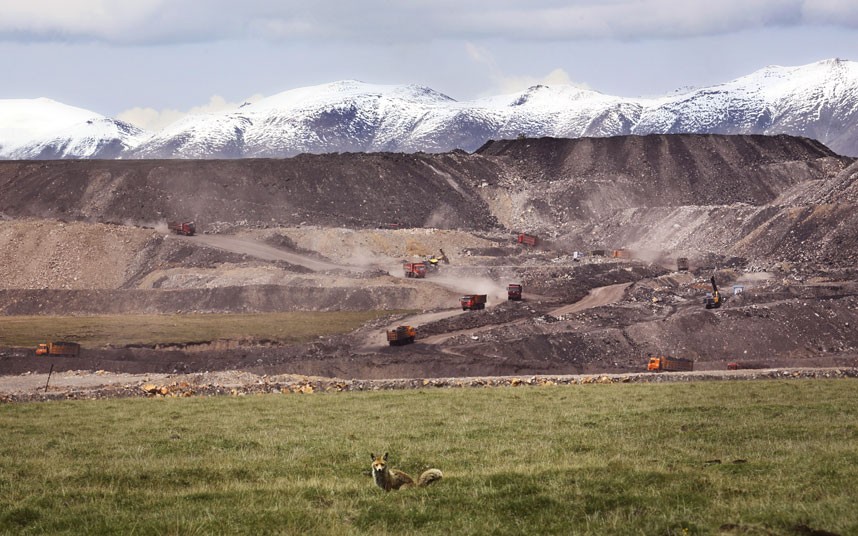
Picture: Wu Haitao/Greenpeace
(TibetanReview.net, Aug10, 2014) –China may be making the right policy pronouncements about protecting the environment, but these have not prevented it from proceeding with mining projects which negate those claims in many historically Tibetan inhabited areas with potentially serious consequences. A Greenpeace East Asia investigation, carried out by covert campaigners, has revealed that two coalfields 14 times the size of the City of London have turned alpine meadows into craters in Qinghai Province, according to a report which appeared on the blueandgreentomorrow.com website Aug 8. The report said the two Chinese coal mines were in breach of China’s environmental protection laws and nature reserve regulations.
“China’s natural reserve law says you shouldn’t be doing any large-scale operations within national parks,” The Guardian Jul 8 quoted Li Shuo, Greenpeace East Asia’s climate and energy campaigner, as saying. “This is a clear violation.”
The report said the mines were being operated by a handful of private firms led by the China Kingho Energy Group.
The report cited satellite images and data analysed by legal experts as showing that two working mines were breaking the law by overlapping the Quilian Mountains National Ecological Functional Zone and another two about to do the same at a nearby nature reserve.
One of the major environmental dangers posed by the coal mines is reported to be that they threaten a major water source. The ‘Muli’ coalfield operations have resulted in topsoil being put into the course of the nearby Datong River, thereby threatening the water supply to one of the sources of China’s ‘mother’ Yellow River. The report has added that the mining activities could lead to water scarcity in more than 50 cities and 420 towns that rely on the Yellow River for drinking water and agriculture.
Data also shows that the two mines have already destroyed 42.6km of alpine meadows, according to the report.
The blueandgreentomorrow.com report cited Li as saying, “This huge coal mine dug into the birthplace of China’s mother river is arguably the most shocking example of the threat coal poses to the country’s water supply.”
Rampant coal mining also seriously affects another increasing scarce resource in China: water. According to Li, “China’s growing hunger for coal is not only fuelling the cycle of air pollution crises plaguing the country’s largest cities, it’s also using up enormous amounts of water, threatening whole regions with water shortages and desertification.”
The report cited a study published Jul 2014 as warning that by 2040, it will be impossible for China to supply enough water to its citizens if the nation continued to produce electricity as it does now.


